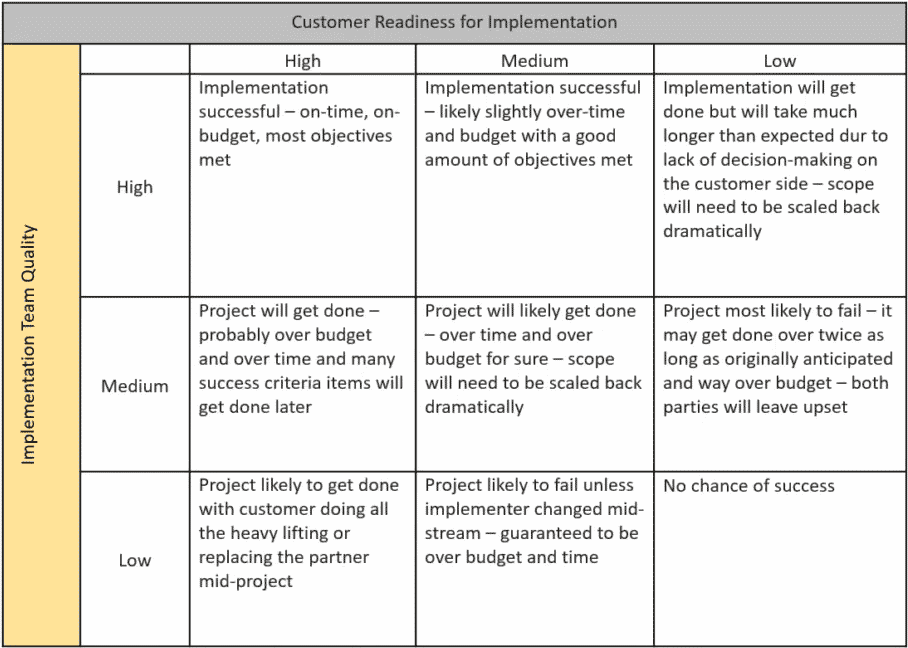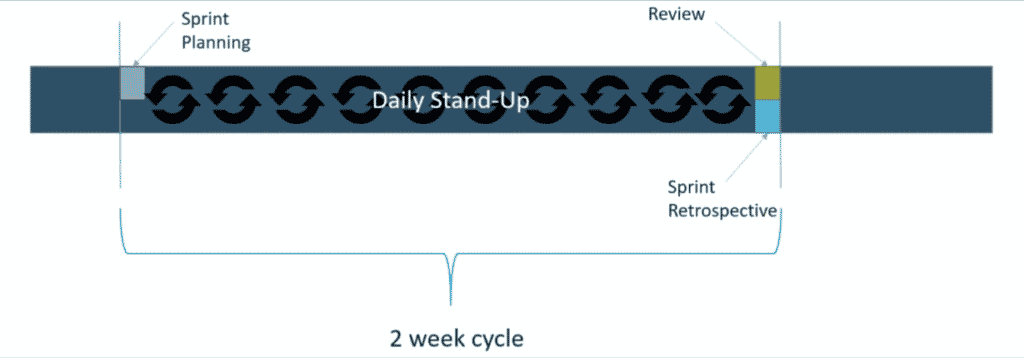Four Keys to Choosing the Best CRM or ERP Solution – Part 3: Implementer
The Four Keys to Choosing the Best Solution series discusses what companies must consider when selecting a software solution. Considering all four keys is important in making sure the implementation does not incur unnecessary costs and your team is left with the best possible solution. Read part 1 in this series: Four Keys to Choosing the Best ERP or CRM Solution - Part 1 and 2: Fit and Platform. In Part 3, we'll take a look at the importance of who you choose to implement your ERP or CRM solution.
Working with a professional helps you get the best results when implementing new software. There are five key points to evaluate implementers:
- Implementation plan – What is their implementation plan? How is the implementation going to work? What tools will they use to make sure it’s successful? How will they measure progress to know you’re on track as part of the implementation?
- Industry experience – You want to know that this implementer has some experience in your industry. If they do not have much experience in your industry, how will you educate them about what you do?
- Platform experience – Ask your implementer about their platform experience.
- Depth – Look for a partner with some depth. Ask them how many resources they have in this practice.
- Fit with your team – Ask about the implementation team. If they are offshore, consider problems with language and time zone differences.
Your Readiness for an Implementation
Think about how ready you are for implementation. Before you begin a project, you should clean up data, identify processes in scope, know who will be involved in the project from your team’s perspective, budget, and work on change management efforts. This should be done before you start to engage vendors and talk about the implementation process.
Methodologies
The waterfall methodology is the classic way to implement software. This is a step-by-step process involving diagnosis, analysis, requirements gathering, design, development, code, deployment, and go live. This method is not used as often now as it generally leads to longer and more expensive implementations.
Agile is the more common methodology used today. It is an iterative model that uses sprints to chunk out pieces of the implementation. Agile faces challenges in large ERP projects because there are many dependencies, so you need to start with core master data elements.
At Stoneridge, we have developed what we call process centric implementation. This is primarily derived from the Agile approach, but also uses waterfall-like aspects to map out activities and dependencies in a logical way.
You’ll want to know whether your implementation partner uses a waterfall, Agile, or hybrid methodology. Be cautious if they use a waterfall approach because it is difficult to manage. If they are using an Agile approach, ask how they will complete tasks in the proper order. If they have a hybrid approach, ask how it works and which aspects of waterfall and Agile they will put together to make your implementation run smoothly.
The best way to create the right go live date for your implementation is to map out all elements in the process. Be wary of implementation partners that give unrealistic go live dates. Choose an implementor that has a comprehensive project roadmap (example shown below) and gives reasonable enough time for each step that needs to occur within the project.
Sprints – What and Why
Sprints give the implementation partner a chance to lay out all activities and see how well you are moving towards finishing the project. In the waterfall approach it is difficult to know when exactly the project will end, but the agile and hybrid methodologies use sprints to track progress. With sprints, you know every two weeks what is supposed to be done and can assign tasks to people with the capacity to do them. Sprints allow the team to react to feedback quickly and adjust focus by shortening the feedback loop. They encourage accountability and transparency within the team and with the client.
A sprint is a two-week cycle in which you plan, do daily stand-ups to check in on progress, and review to see how well you did and what could be done better next time. The result of a sprint is delivered value to the client abiding to a definition of done. Use sprints to know what’s going on with your implementation.
Earned Value Curve
If going live on time is a priority, ask your implementer if they have a means of tracking progress. One of the best ways to track project cost and value is with the earned value curve. To do this, map out planned value associated with your budget at the beginning of the project, then compare actual costs to planned costs. If you are behind on earned value (you did not get done what you planned to get done during a certain time), then your project is not going to go live on time. If your actual cost, planned value, and earned value are all in sync, you will most likely be on time and on budget. If your implementation partner has no means of measuring earned value, you will not know during the process if you are on time or on budget.
Implementation Team Roles
- The executive sponsor is a leader at the implementation partner. Though they are not very involved in the project on a day-to-day basis, they are ultimately responsible for everything going well. You want to interface this person with your executive sponsor.
- The engagement manager is responsible for day-to-day activities and supervising the implementation team. Their job is to make sure the right resources are on the project and that the process runs smoothly.
- The project manager lays out the project schedule, manages the budget and scope, does change requests, and manages risks. They are heavily involved in the project and their goal is to have no wasted time.
- The solution architect or solution delivery manager is a functional leader who makes sure the implementation pieces all come together and work well.
- The functional consultant(s) focuses on a particular area of the project. They are on-site and interface with your team members relatively often.
- The technical consultant makes sure you have the right environments, the code can move between environments, the security is right, and the performance will work well in the environment. Their job is to take care of all non-functional things.
- The developer(s) creates custom code, custom integrations, and custom reporting work.
- Quality assurance is responsible for organizing the testing and making sure you have proper test cases and a test execution plan on your project.
- The support engineer(s) supports your team after go live.
Onsite vs Remote
The more prepared you are for an implementation, the less your implementation team needs to be onsite. Onsite benefits include developing a stronger relationship between the teams, more effective whiteboarding sessions, hands-on help for CRPs and train the trainer sessions, and the implementation team gets a better understanding of your business.
The benefits of remote work include significant cost savings (around 15%) and more weight on the internal team to own the project. There is no reason to travel onsite for certain activities, such as design, development, and technical consulting.
Check out the next blog post in this series: Part 4: Cost.
Under the terms of this license, you are authorized to share and redistribute the content across various mediums, subject to adherence to the specified conditions: you must provide proper attribution to Stoneridge as the original creator in a manner that does not imply their endorsement of your use, the material is to be utilized solely for non-commercial purposes, and alterations, modifications, or derivative works based on the original material are strictly prohibited.
Responsibility rests with the licensee to ensure that their use of the material does not violate any other rights.




